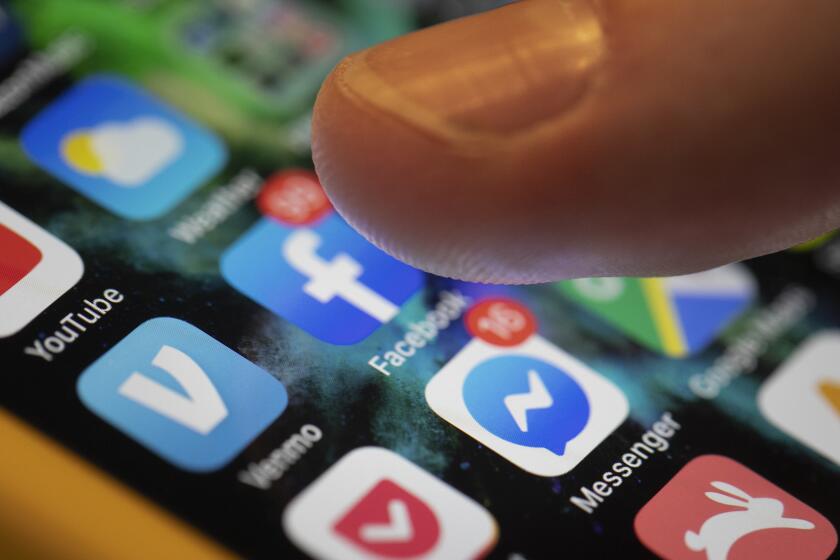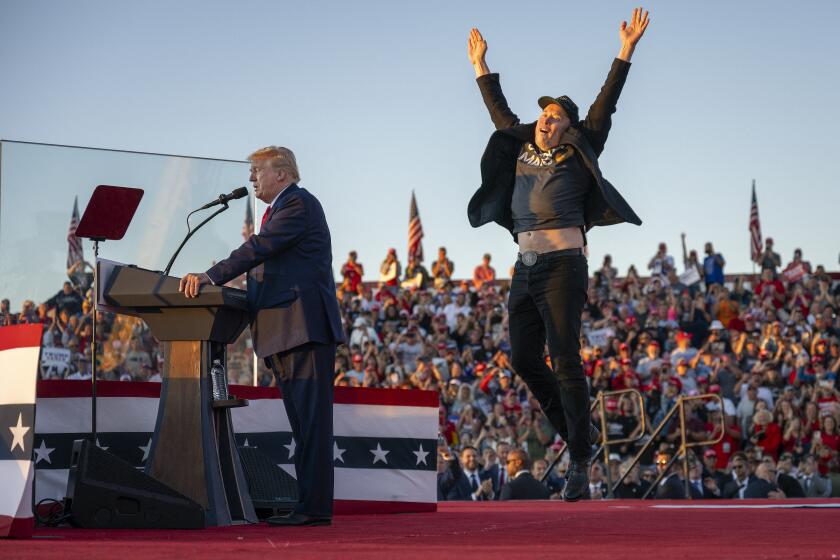On Tiny Screens, Advertisers See Opportunity
The wireless revolution has bombarded cell phones and other hand-held devices with opportunities for users to shop, play video games, check weather reports and trade stocks. So it should come as little surprise that advertisers are trying to squeeze their way onto the tiny screens as well.
Attracted by the prospect of seizing a piece of real estate that traditionally has been devoid of ads, marketers are fantasizing about how they can use matchbook-size screens to sell items such as movie tickets and Chevrolets.
Tens of thousands of college basketball fans who signed up for a play-along cell phone game from ESPN received scores during last month’s NCAA tournament with a message: “Presented by Chevy Trucks.”
“Over the course of the tournament, we delivered a significant amount of exposure for Chevy,” said Riley McDonough, vice president of sales for the ESPN Internet group.
New York-based media analyst Jack Myers predicts that 1% of all advertising spending eventually will be directed toward mobile devices. That may seem paltry, but it amounts to a $2.6-billion market by 2005.
But forecasts for mobile advertising revenue vary significantly--an indication of its uncertain future. Analysts at Forrester Research anticipate less than $1 billion in 2005, even as market researchers at Kelsey Group expect the figure to reach $6.8 billion.
Regardless of where the actual figure ends up, most acknowledge that the opportunities are significant. “M-advertising” already is accepted in parts of Europe and Asia.
In a campaign in Hong Kong for the Arnold Schwarzenegger film “Collateral Damage,” wireless ad firm SkyGo Inc. promoted a four-digit code on billboards and movie posters. Fans who entered the code through the text-messaging feature on their cell phones were given information about the movie, show times and ticket prices, said Daren Tsui, SkyGo’s president.
U.S. marketers are just beginning to experiment with wireless coupons, text messaging and sweepstakes to get the attention of consumers who use wireless devices.
Although advertising on cell phones may seem like an ideal medium to reach a captive market and provide personalized information, many obstacles and unknowns have kept advertisers on the sidelines.
Marketers always want to reach the widest audience possible, but most cellular consumers have either basic digital phones or older analog models that lack advanced features such as Internet access.
For another thing, there just isn’t much advertising real estate to work with.
The limited space on cellular handsets generally has meant that most ads can consist only of text messages. The new phones for high-speed “3G” networks promise to deliver color, video clips and other messages.
Companies recognize that with such limited space, they have to deliver their messages in compact and cunning ways.
A Manhattan-based company called Upoc has gained a lot of attention for its idea of sending out “celebrity sighting” alerts to fans as a way to create buzz without resorting to direct advertising.
Upoc--partly owned by Tribune Co., parent of The Times--has hundreds of such message groups, created by the company and users, and about 250,000 subscribers.
Entertainment companies have created Upoc groups to send text messages with news and tour dates for music groups such as Destiny’s Child and information about movies such as the current re-release of “E.T. the Extra-Terrestrial.”
“When you asked people about it, they didn’t consider it marketing,” said Greg Clayman, vice president of business development at Upoc.
Such innovative marketing campaigns have created an unusual problem for mobile advertisers: No one is quite sure how to place a value on mobile ads because it is not as easy as figuring out how to charge for a 30-second TV spot based on ratings or a full-page magazine ad based on readership.
“We’re still trying to come to an agreement on what a proper ad unit should be,” said Tim Hanlon, a vice president at Starcom Worldwide, a unit of ad company Bcom3.
In addition, cellular companies in the U.S. have been slow to open their networks to mobile advertising. Although companies have created the technology to deliver ads and promotions to cell phones, the major carriers have taken ads only on a limited basis. The ESPN wireless updates on the NCAA basketball tournament, for example, were available only to AT&T; Wireless, Nextel and Sprint subscribers.
But some of these restrictions are coming down. Most cellular carriers are standardizing their so-called short messaging service so their customers can send text messages to a customer of another carrier.
As mobile advertising forges ahead, carriers say they are being careful not to spark a consumer backlash. Executives say that they want to make sure privacy guidelines are set up and that controls are in place to restrict “spam,” or unsolicited junk messages.
The downturn in the telecommunications sector has put spending for experimental wireless products on hold, but marketers are hoping that as the U.S. economy recovers, new promotions on wireless phones too will evolve into a medium that consumers will accept.



